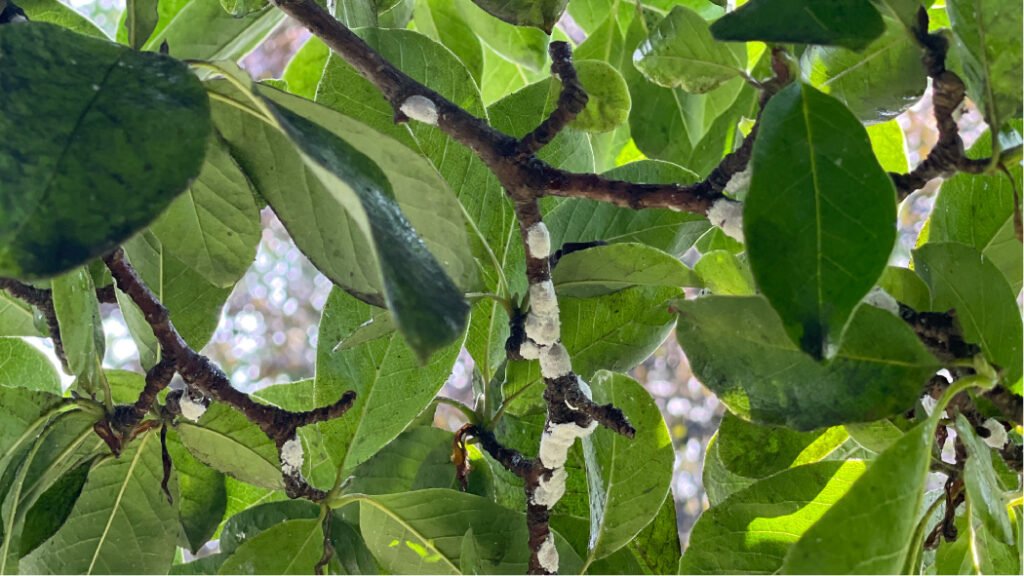Why is my tree dripping? Why is my car covered in sap or sticky substance?
Trees can drip sap, but in all likelihood it is not sap that your tree is dripping. It is likely that your tree is dripping a substance called, Honeydew. Let me be clear, honeydew is just a lovely bow on something that is actually pretty disgusting.
What is my tree dripping? Why is my walkway or patio black?
Honeydew is excrement (yes, you read that correctly (i.e. dung, feces, or droppings)) from an insect. A couple of different insects produce honeydew. Aphids, mealybugs, leafhoppers, and scale are the most common culprits in the production of this sticky dripping substance. Honeydew can attract bees and wasps because it is molecularly a sugary substance. Essentially, the aphids or scale insects are sucking the nitrogen out of the tree and excreting the excess sap over your patio, cars, and understory trees and shrubs. Eventually, this honeydew will turn into sooty mold, which is a black fungus and can be a problem for the aesthetics of your property.
How do I get rid of honeydew dripping from my trees? How do I get rid of insects that cause honeydew?
First things first, you need to call an arborist to determine which kind of insect you are dealing with so that the treatment to control the insect can be properly timed. Some insects are harder to control than others and require very specific timing to control the insect on your property. For example, scale (like Magnolia Scale, which is pictured above) is a difficult to control insect. There are many types of scale and controlling scale is best done when you target the crawler stage of the insect. Each type of scale has a different timing for the emergence of crawlers (their offspring/spawns/babies by the hundreds – I can keep going). So, timing your treatment is best for controlling the insect population and using integrated pest management.
Why is controlling Magnolia Scale, or other types of scale difficult?
It is difficult because most insecticides travel through the xylem of the tree, which transports water and nutrients upwards. Adult magnolia scale (which are mostly female) have a mouthpart called a stylet, which is like a feeding tube. They insert their feeding tube into the phloem of the tree and suck out the photosynthates (sugars) that the plant or tree has produced to feed itself. While one or two years of an infestation may go unnoticed by a homeowner, multiple years of infestation can be detrimental to the health of your tree or shrub and cause significant dieback.
Why are insects attacking my tree and not my neighbors’ tree?
Insects can detect when trees are stressed, making these trees more vulnerable. To reduce insecticide use, focus on managing tree stress—consult a certified arborist to assess factors like location, water needs, and environmental changes. Stressors include poor placement, inadequate watering, construction, compacted roots, and climate shifts. Developing a plan to minimize tree stress is key to addressing insect problems. Pair this with targeted insect treatments initially, then reduce as the tree recovers its natural defenses.


